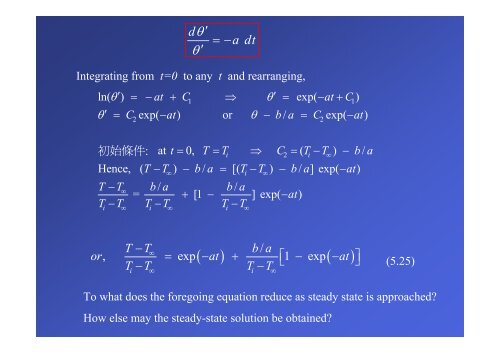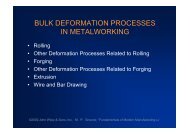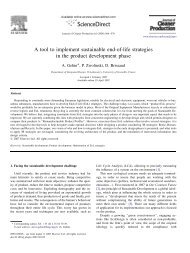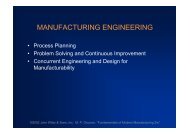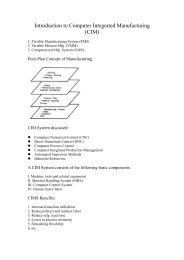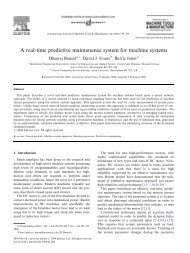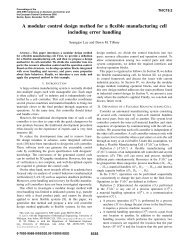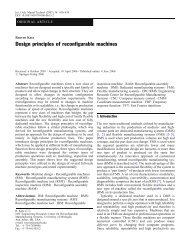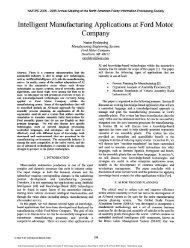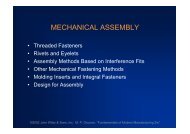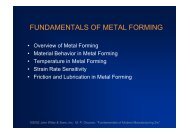The Lumped Capacitance Method
The Lumped Capacitance Method
The Lumped Capacitance Method
You also want an ePaper? Increase the reach of your titles
YUMPU automatically turns print PDFs into web optimized ePapers that Google loves.
dθ<br />
′ =− adt<br />
θ ′<br />
Integrating from t=0 to any t and rearranging,<br />
ln( θ′ ) = − at + C ⇒ θ′<br />
= exp( − at + C )<br />
1 1<br />
θ′ = C exp( −at) or θ − b/ a = C exp( −at)<br />
2 2<br />
att = 0, T = T ⇒ C = ( T −T ) − b/<br />
a<br />
i<br />
Hence, ( T −T ) − b/ a = [( T −T ) − b/ a] exp( −at)<br />
∞<br />
T −T∞<br />
b/ a b/<br />
a<br />
= + [1 − ] exp( −at)<br />
T −T T −T T −T<br />
i ∞ i ∞ i ∞<br />
i<br />
∞<br />
2<br />
i<br />
∞<br />
T −T∞<br />
b/<br />
a<br />
or, = exp ( − at) + ⎡1 − exp( −at)<br />
⎤<br />
T −T T − T<br />
⎣<br />
⎦ (5.25)<br />
i<br />
∞<br />
i<br />
To what does the foregoing equation reduce as steady state is approached?<br />
How else may the steady-state solution be obtained?<br />
∞


